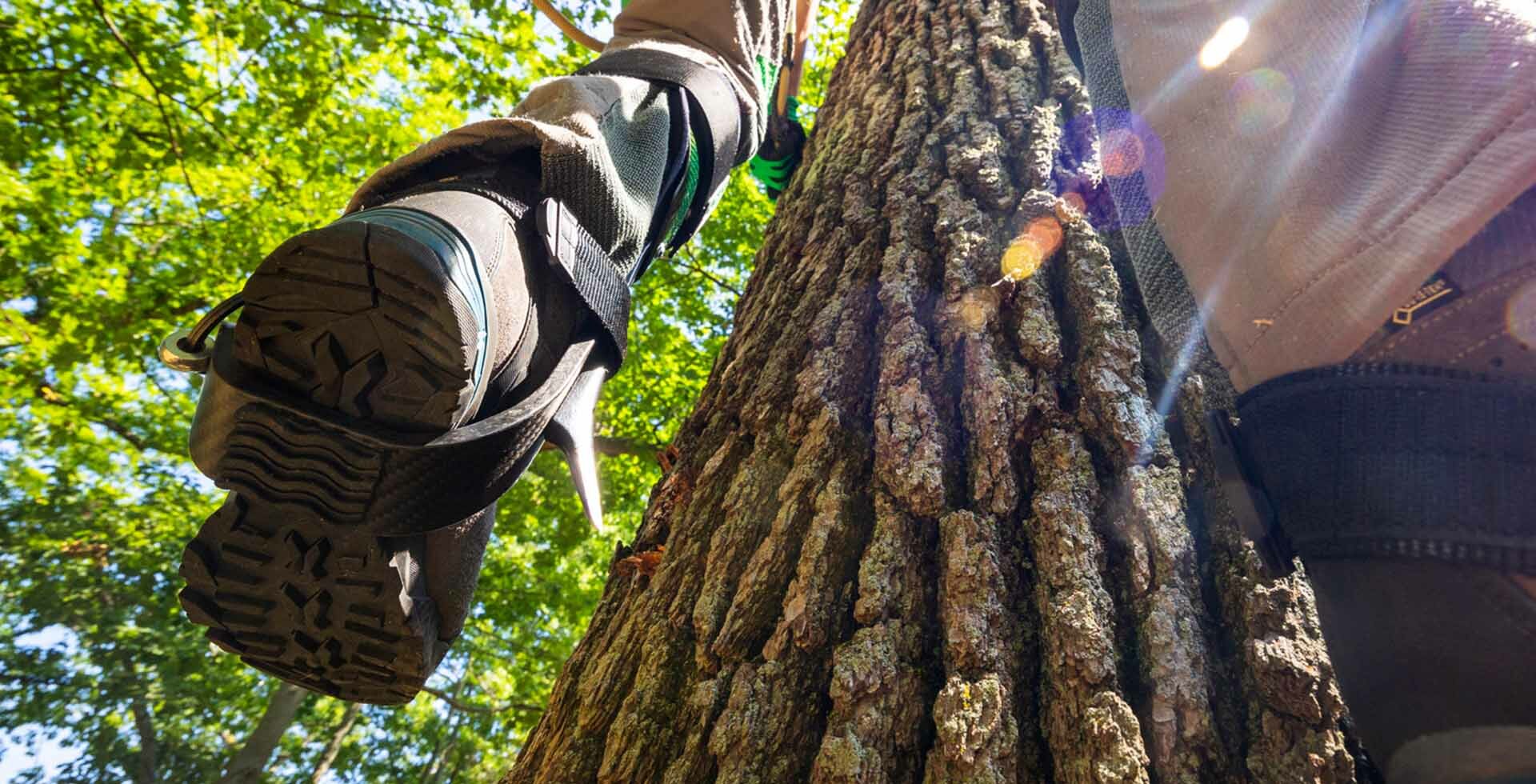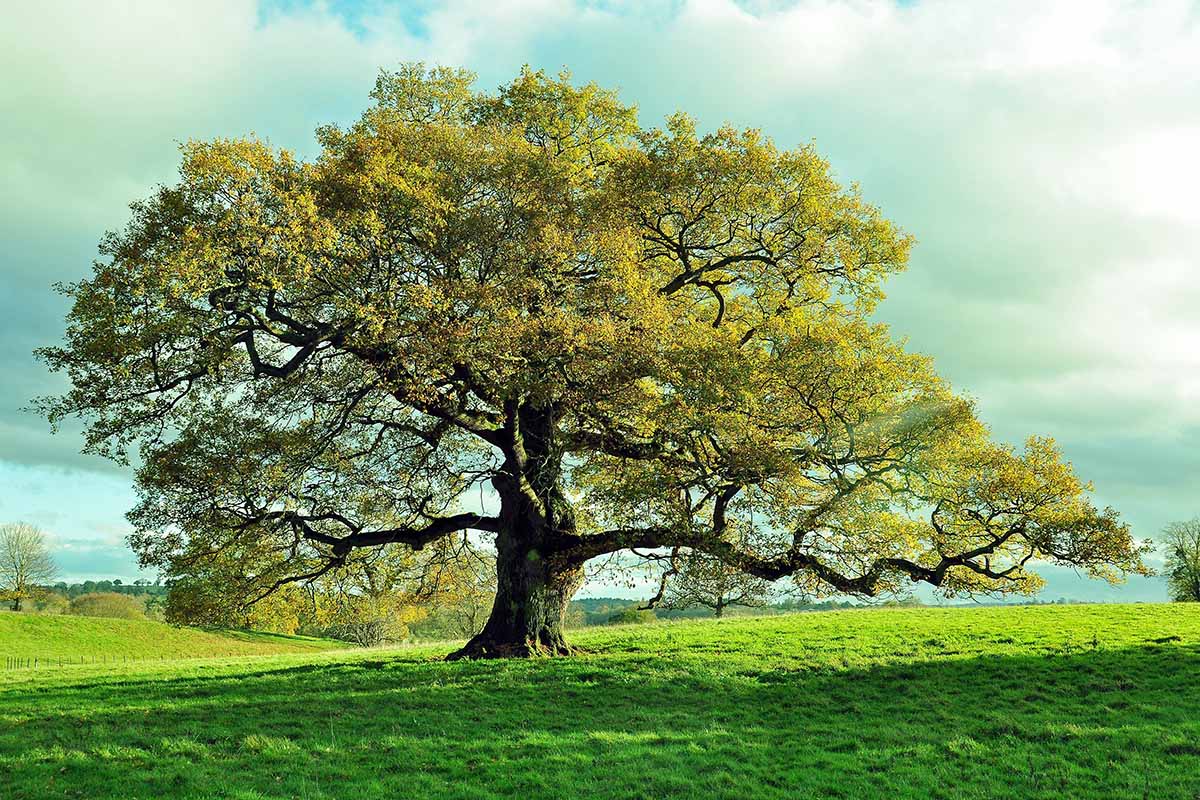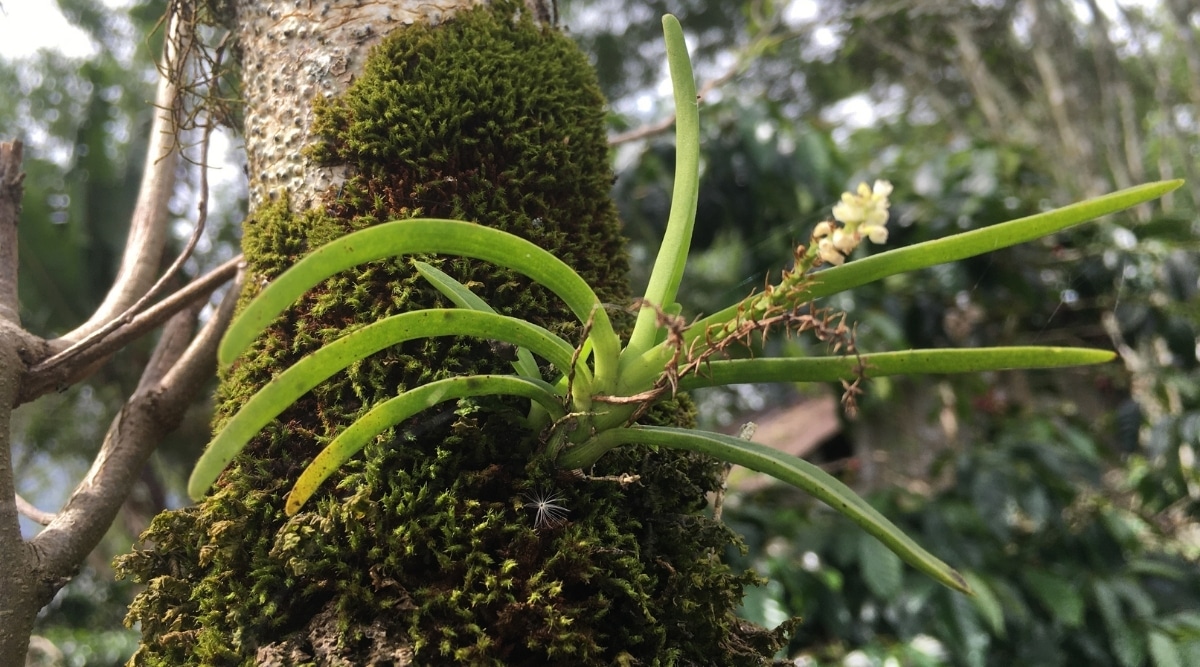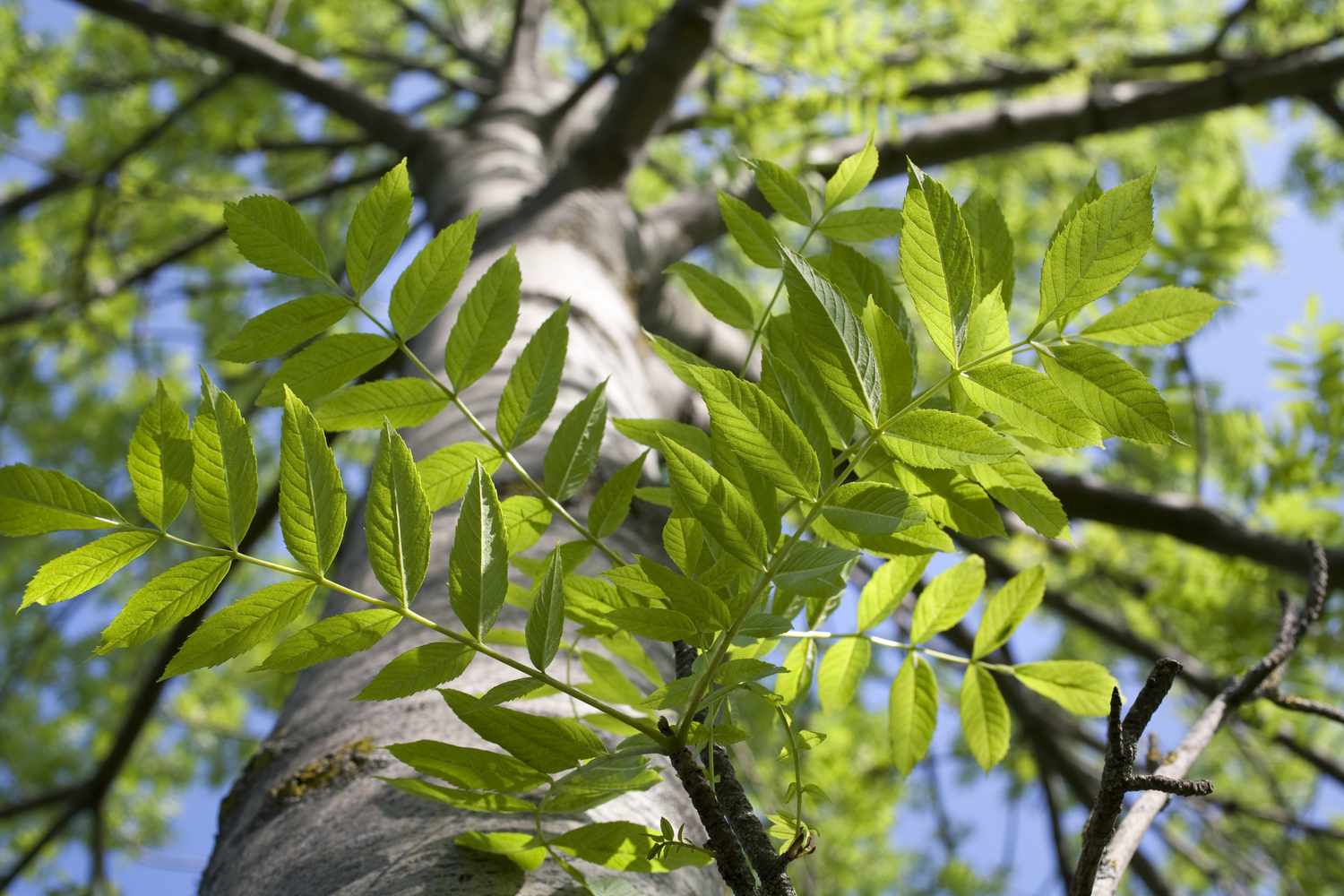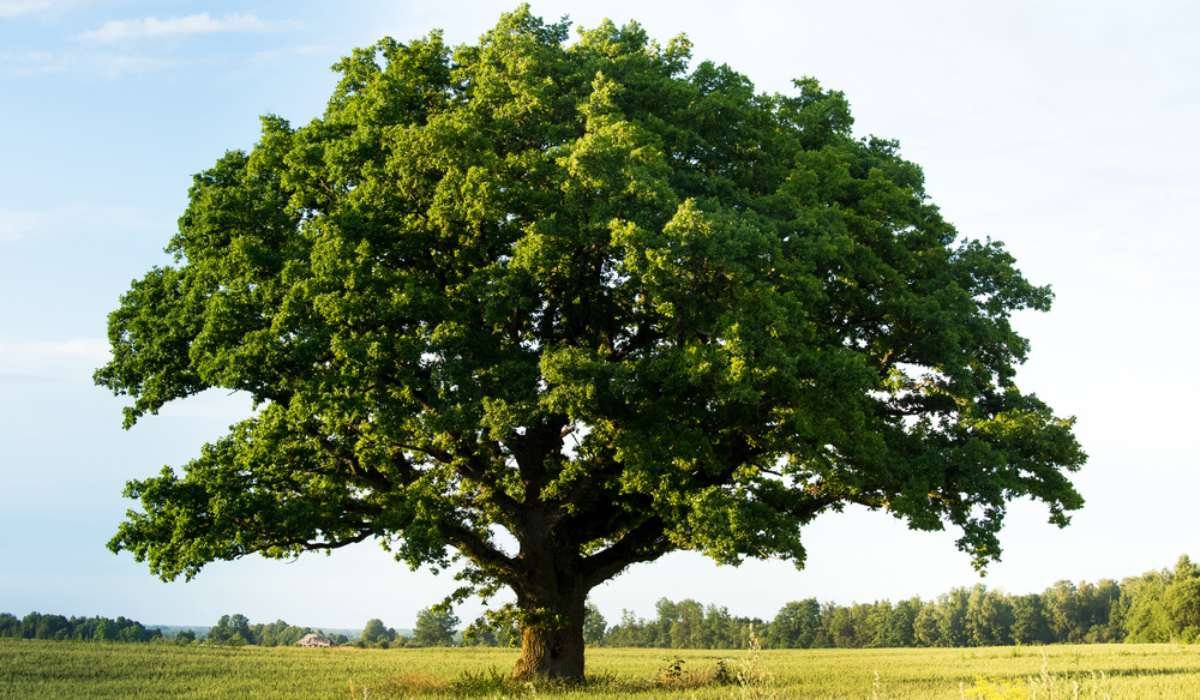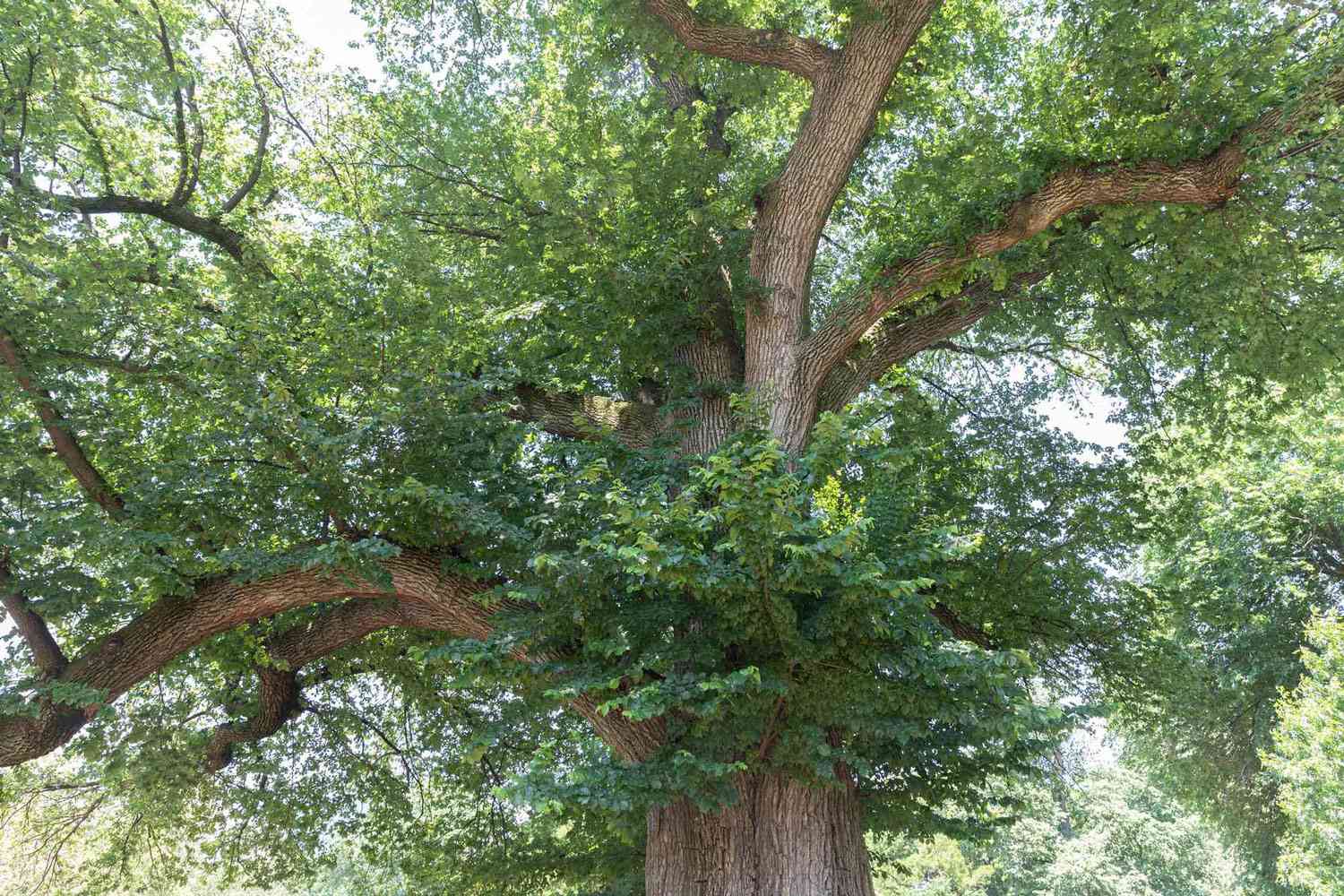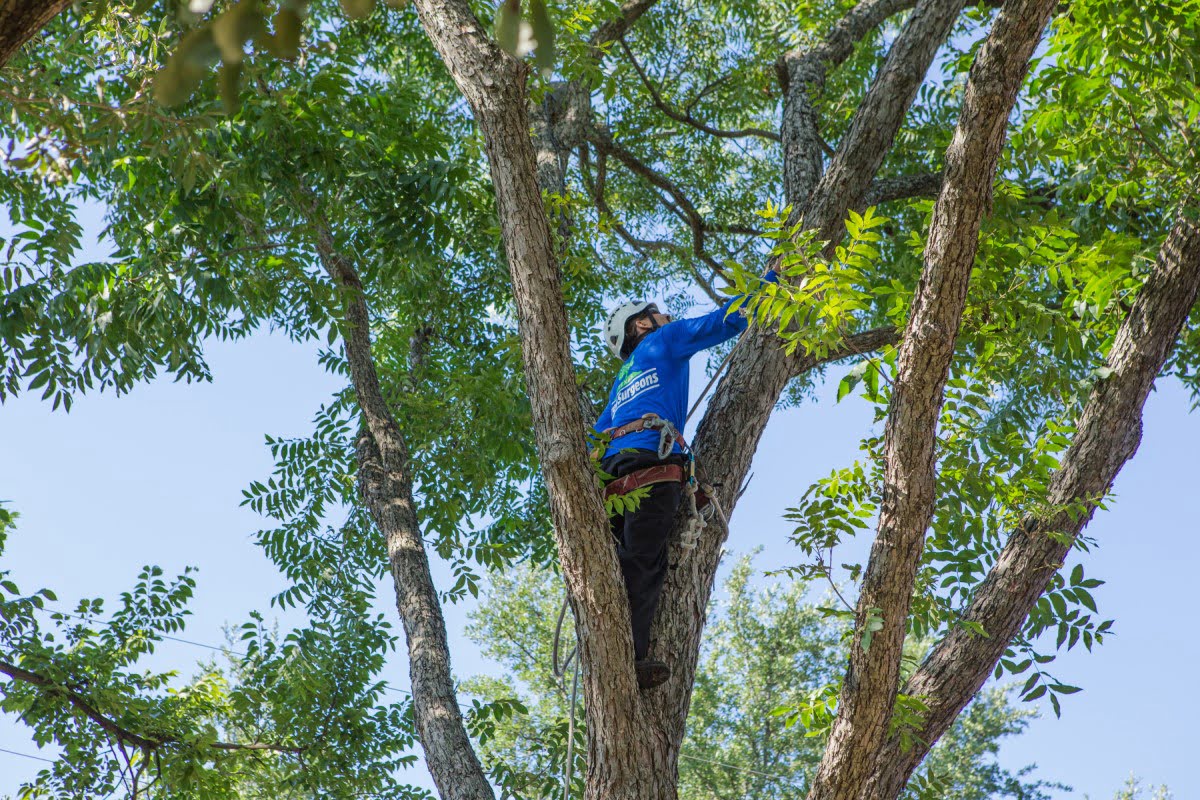Home>Gardening News and Trends>Latest News>How Heavy Are Trees
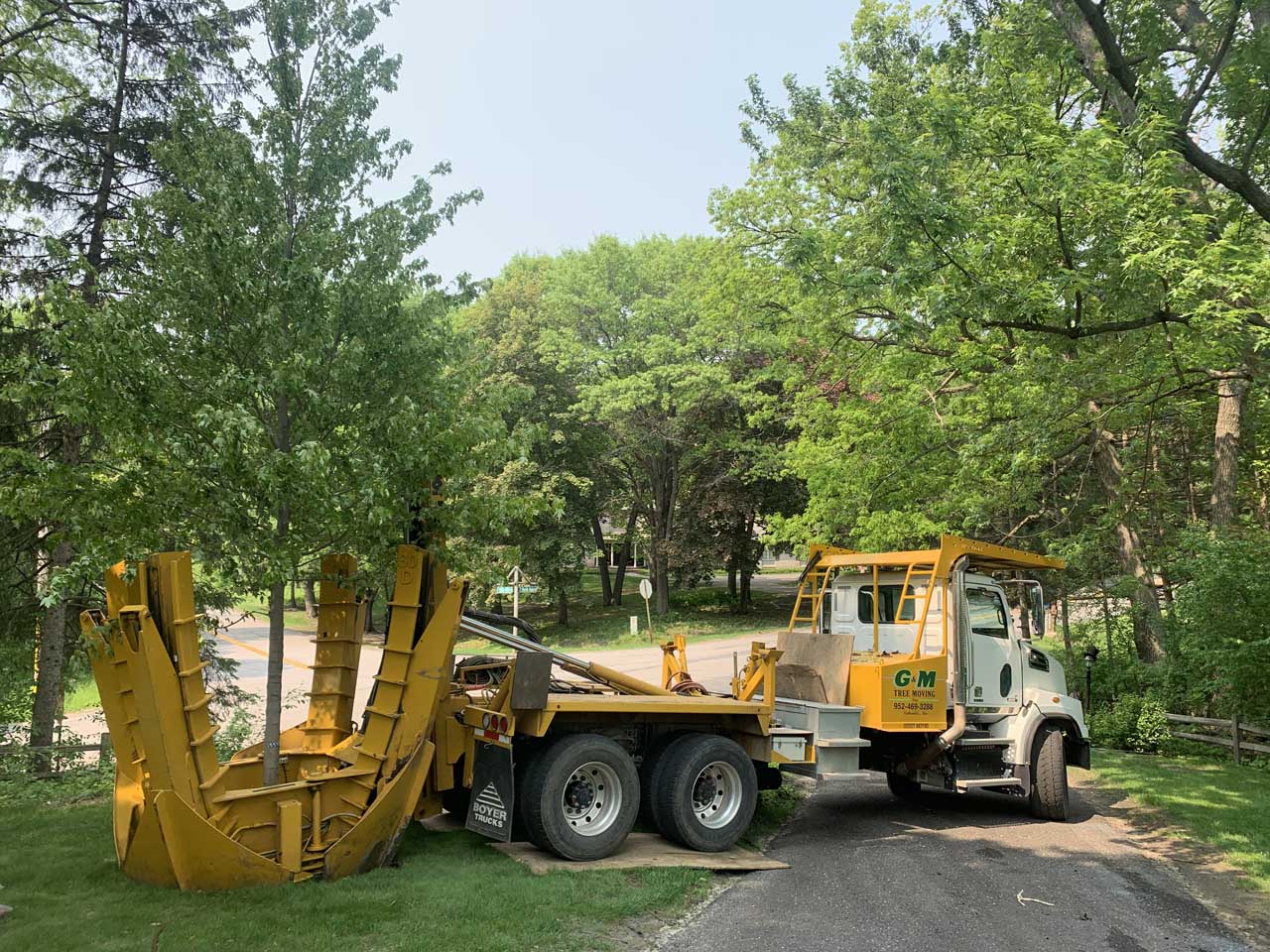

Latest News
How Heavy Are Trees
Modified: January 22, 2024
Discover the latest news on tree weights and find out just how heavy trees can be. Stay updated with the latest information in the world of forestry and botany.
(Many of the links in this article redirect to a specific reviewed product. Your purchase of these products through affiliate links helps to generate commission for Chicagolandgardening.com, at no extra cost. Learn more)
Table of Contents
Introduction
Trees are an essential and captivating part of our natural environment, providing numerous benefits to both our ecosystem and our everyday lives. However, have you ever wondered just how heavy these mighty giants can be? Measuring the weight of trees may not be something that crosses our minds often, but it is an important area of study for researchers, arborists, and conservationists. Understanding the weight of trees can provide valuable insights into their growth, health, and ecological impact.
Whether it’s for scientific research, urban planning, or even timber harvesting, knowing the weight of trees is crucial for making informed decisions and implementing effective management strategies. This article explores the importance of measuring tree weight, the methods used to determine it, the factors that influence tree weight, the benefits of this knowledge, its practical applications, as well as the challenges and limitations associated with tree weighing.
The weight of a tree is a significant factor in determining its overall size and mass. It is an essential data point that helps scientists and arborists gain a better understanding of tree physiology and growth patterns. By accurately measuring the weight of trees, they can estimate their biomass, carbon sequestration potential, and even predict the structural stability of the tree.
Several methods are employed to measure the weight of trees, ranging from traditional techniques to modern technological advancements. Traditional methods include using tape measures and clinometers to estimate tree height and girth, which are then used to calculate weight using formulas and conversion factors.
A more advanced approach involves the use of specialized equipment such as electronic scales or load cells that are attached to the tree trunk or branches. These devices provide precise measurements and eliminate the need for complex calculations.
Several factors influence the weight of trees, including species, age, environmental conditions, and overall health. Different tree species have different growth rates and structures, resulting in variations in weight. Older trees tend to be heavier than younger ones due to increased biomass accumulation over time.
Environmental factors such as soil quality, water availability, and climate also play a role in tree weight. Trees growing in nutrient-rich soil and receiving ample sunlight and water tend to have greater biomass and, therefore, weigh more.
Knowing the weight of trees offers several benefits on both a micro and macro level. At an individual tree level, this information can help arborists assess the health and structural integrity of trees, identify potential risks such as branch failure, and determine the appropriate treatment or management practices.
On a larger scale, understanding tree weight is crucial for ecological research and conservation efforts. It allows scientists to estimate carbon storage and sequestration potential, assess the impact of deforestation, monitor forest health, and develop sustainable practices in timber harvesting.
The Importance of Measuring Tree Weight
The weight of trees plays a critical role in multiple fields, making the measurement of tree weight an essential task. Understanding the weight of trees provides valuable insights into their growth, health, and ecological impact. Here are several reasons why measuring tree weight is of utmost importance:
- Evaluating Tree Health: Measuring tree weight allows arborists and researchers to assess the overall health and vigor of trees. A decline in weight may indicate poor health, nutrient deficiencies, or the presence of diseases or pests. By monitoring changes in tree weight over time, healthcare professionals can implement appropriate treatments for tree care and ensure their long-term sustainability.
- Assessing Structural Integrity: The weight of a tree is closely linked to its structural stability. Heavy branches or imbalanced weight distribution can lead to an increased risk of branch failure or even tree collapse. By accurately measuring tree weight, arborists can identify potential risks and take preventative measures such as pruning or cabling to maintain the tree’s safety and protect surrounding property.
- Estimating Biomass and Carbon Sequestration: Trees are known for their ability to store carbon and reduce greenhouse gas emissions. Knowing the weight of trees helps researchers estimate their biomass and carbon sequestration potential. This information is crucial for climate change mitigation strategies, as it allows scientists to evaluate the effectiveness of forests in sequestering carbon and developing sustainable practices to maximize their carbon storage capacity.
- Urban Planning and Design: In urban areas, trees provide numerous benefits such as shade, improved air quality, and aesthetic appeal. However, their weight is an essential consideration when planting or maintaining trees near buildings or infrastructure. Knowing the weight of trees helps urban planners and architects determine suitable tree species and placement, ensuring the safety and longevity of urban forests.
- Timber Harvesting: For the forestry industry, tree weight is a crucial factor in determining timber yield and profitability. By accurately measuring tree weight, foresters can estimate the volume of usable wood and plan efficient harvesting operations. This knowledge aids in sustainable forest management, ensuring the responsible use of forest resources and minimizing environmental impacts.
Overall, measuring tree weight serves as a fundamental tool in various disciplines, including arboriculture, ecology, urban planning, and forestry. It enables informed decision-making, promotes tree health and safety, aids in carbon sequestration analysis, and supports sustainable management practices. By understanding the weight of trees, we gain a deeper appreciation for these majestic organisms and can work towards achieving a harmonious balance between humans and nature.
Methods for Measuring Tree Weight
Measuring the weight of trees requires careful consideration and the use of various methods and tools. Researchers and arborists employ different techniques, ranging from traditional to modern, to accurately determine the weight of trees. Here are some common methods used in tree weighing:
- Tape and Formula Method: This traditional method involves measuring the girth and height of a tree using a tape measure and clinometer. The girth is measured at breast height, which is typically 4.5 feet above the ground. These measurements are used to calculate the estimated weight using specific formulas and conversion factors. While this method provides a rough estimate, it is often used for large-scale assessments where precision is not essential.
- Weighing Platforms: Weighing platforms or scales are a practical solution for accurately measuring tree weight. These platforms can be either simple mechanical devices or more advanced electronic scales. The tree is carefully lifted using a crane or hydraulic jack, and its weight is recorded when it is suspended in the air. This method provides precise measurements and is commonly used in research studies or when accurate weight data is necessary.
- Load Cells: Load cells are specialized sensors that can be attached to the tree trunk or branches to measure weight. These sensors use strain gauges to detect the force exerted by the tree’s weight. Load cell measurements are more efficient than other methods as they eliminate the need for complex calculations and can provide real-time weight data.
- Ultrasonic Techniques: Ultrasonic techniques utilize sound waves to estimate tree weight. By measuring the time it takes for sound waves to travel through the tree trunk and bounce back, researchers can calculate the wood density and estimate the tree’s weight. While this method may not be as accurate as weighing platforms or load cells, it offers a non-invasive and quick way to estimate tree weight in the field.
- Laser Scanning: Laser scanning technologies, such as LiDAR (Light Detection and Ranging), are increasingly being used to estimate tree weight. LiDAR uses a laser beam to create a 3D model of the tree, accurately measuring its size and volume. By combining this data with density information, researchers can estimate the tree’s weight. This method is particularly useful for studying large forested areas or assessing tree weight from aerial or satellite imagery.
Each method has its advantages and limitations, and the choice of technique depends on factors such as the size of the tree, available equipment, and desired level of accuracy. Careful consideration should be given to selecting the most appropriate method to ensure accurate tree weight measurements.
Regardless of the method chosen, it is important to note that measuring tree weight requires the expertise of trained professionals. It involves careful tree handling, the use of specialized equipment, and adherence to safety protocols to ensure the well-being of both the tree and the individuals involved in the weighing process.
Advancements in technology continue to drive improvements in tree weighing techniques. As our understanding of tree physiology and weight-related factors grows, it is likely that new and innovative methods will emerge, providing even more accurate and efficient ways to measure the weight of trees.
Factors Affecting Tree Weight
The weight of a tree is influenced by various factors, including species, age, environmental conditions, and overall health. Understanding these factors is essential for accurately estimating tree weight. Let’s explore some of the key factors that affect the weight of trees:
- Species: Different tree species have distinct growth rates, shapes, and sizes, resulting in variations in weight. Some species, such as oak or redwood, are known for their immense size and weight, while others, like birch or willow, tend to be lighter. Factors such as wood density and branching patterns play a role in determining the weight of different tree species.
- Age: As trees grow older, they accumulate more biomass and, therefore, become heavier. This is because older trees develop thicker trunks, larger branches, and denser wood, which contribute to their overall weight. Younger trees may have a lighter weight due to their smaller size and less developed structure.
- Environmental Conditions: Environmental factors significantly impact tree weight. Soil quality, water availability, sunlight exposure, and temperature directly affect a tree’s growth and biomass accumulation. Trees growing in nutrient-rich soil, receiving ample water and sunlight, are more likely to have greater biomass and, consequently, weigh more. In contrast, trees growing in unfavorable conditions may exhibit reduced growth and lower weight.
- Health and Vigor: The health of a tree directly impacts its weight. Healthy trees with sufficient access to nutrients, water, and sunlight are more likely to have robust growth and higher biomass, resulting in a greater weight. Conversely, trees suffering from diseases, pest infestations, or nutrient deficiencies may experience reduced growth and, consequently, weigh less.
- Seasonal Variations: Tree weight can vary throughout the year due to seasonal changes. Trees tend to be heavier during the growing season when they are actively photosynthesizing and accumulating biomass. In contrast, during dormant periods, such as winter, tree weight may decrease due to the loss of leaves and reduced metabolic activity.
It is important to note that these factors are interconnected, and the exact influence of each factor can vary depending on the specific tree species and environmental conditions. Therefore, understanding the unique characteristics of individual trees and their specific habitat is crucial for accurately estimating their weight.
Additionally, it is worth mentioning that while tree weight provides valuable information, it is just one aspect of understanding a tree’s overall health and ecological role. Other factors such as canopy size, root system, and ecosystem interactions also contribute to the overall vitality and function of trees within their environment.
By considering these factors, researchers, arborists, and conservationists can better comprehend the complexities of tree growth and make informed decisions regarding tree management, ecosystem restoration, and sustainable land use.
Benefits of Knowing Tree Weight
Knowing the weight of trees provides numerous benefits across various fields and disciplines. This valuable knowledge offers insights into tree growth, health, and ecological impact, enabling informed decision-making and effective management strategies. Let’s explore some of the key benefits of knowing tree weight:
- Evaluation of Tree Stability: Understanding the weight of trees is essential for assessing their structural stability. Heavy branches or imbalanced weight distribution can pose a risk of branch failure or tree collapse. By knowing the weight, arborists can identify potential hazards and implement targeted measures such as pruning or cabling to ensure the safety of both the tree and its surroundings.
- Preservation of Tree Health: Tree weight is closely linked to overall tree health and vigor. Monitoring changes in weight over time helps detect early signs of decline, nutrient deficiencies, or the presence of diseases and pests. This knowledge allows for prompt intervention and appropriate treatment to maintain the health and longevity of trees.
- Carbon Sequestration Assessment: Trees play a crucial role in sequestering carbon dioxide and mitigating climate change. Accurate tree weight measurements allow researchers to estimate the biomass and carbon storage potential of forests. This information is crucial for evaluating the contribution of trees to global carbon sequestration efforts and developing effective strategies for climate change mitigation.
- Forest Management Planning: Knowledge of tree weight is invaluable in sustainable forest management. By knowing the weight of individual trees or stands, foresters can estimate timber yield and plan efficient harvesting operations. This information optimizes the utilization of forest resources, minimizes waste, and promotes sustainable practices to ensure the long-term viability of the forestry industry.
- Urban Planning and Design: In urban areas, understanding tree weight is crucial for proper tree selection and placement. By considering weight, urban planners and architects can ensure that trees are appropriately positioned to avoid potential damage to infrastructure or property. Additionally, knowledge of tree weight helps in assessing the structural capacity of urban green spaces and ensures healthy and safe urban forests.
Furthermore, knowing the weight of trees allows for data-driven decision-making regarding tree care, landscape management, and ecosystem restoration projects. It provides a basis for formulating guidelines and best practices in tree management and facilitating collaboration among researchers, arborists, and policymakers.
The benefits of knowing tree weight extend beyond practical applications. Understanding the weight of trees can foster a deeper appreciation and awareness of the ecological importance of these majestic organisms. It enhances our understanding of their growth patterns, ecosystem interactions, and the intricate role they play in sustaining planet Earth.
By valuing and utilizing this knowledge, we can work towards creating a sustainable and harmonious coexistence with trees, ensuring their preservation for future generations.
Applications of Tree Weight Data
The data obtained from measuring tree weight has a wide range of applications across various fields and industries. This valuable information provides insights into tree growth, health, and ecological impact, enabling the implementation of effective strategies and practices. Let’s explore some of the key applications of tree weight data:
- Urban Planning and Design: Tree weight data is crucial for urban planners and landscape architects when selecting and placing trees in urban environments. By considering the weight, these professionals can make informed decisions about tree species and placements to ensure compatibility with infrastructure, prevent potential damage, and create aesthetically pleasing urban green spaces.
- Structural Engineering: Engineers and architects utilize tree weight data to assess the potential impact of trees on structures such as buildings, bridges, and roads. Accurate weight information helps determine the load-bearing capacity of nearby structures, leading to appropriate design and construction choices. This ensures the safety and stability of infrastructure in areas with prominent tree presence.
- Forest Management: In forestry, tree weight data is essential for sustainable forest management. Estimating tree weight assists in inventorying forest resources, optimizing timber harvesting operations, and developing forest growth models. This information allows foresters to plan effective timber extraction, minimize waste, and promote sustainable practices that maintain forest health and productivity.
- Climate Change Research: Tree weight data contributes to studies focused on carbon sequestration and climate change mitigation. By estimating the biomass and carbon storage potential of trees, researchers can assess their role in capturing and storing greenhouse gases. This helps in evaluating the effectiveness of forests as carbon sinks and developing strategies to maximize their carbon sequestration capacity.
- Ecological Studies: Tree weight data assists ecologists in understanding ecosystem dynamics and patterns. By evaluating the weight of trees within a given habitat, scientists can assess carbon and nutrient cycling, estimate primary productivity, and gain insights into trophic relationships within the ecosystem. This knowledge aids in conservation efforts and the restoration of degraded ecosystems.
- Tree Care and Maintenance: Arborists and tree care professionals rely on tree weight data to assess the overall health and stability of individual trees. This information guides decisions on pruning, tree treatments, and structural support systems such as cabling or bracing. Knowing the weight helps arborists implement appropriate measures to preserve tree health and mitigate potential risks associated with heavy branches or weak structural integrity.
Additionally, tree weight data contributes to research endeavors related to tree physiology, growth patterns, and genetic studies. It enables scientists to better understand the mechanisms underlying tree development and adaptation, leading to advancements in tree breeding programs and genetic conservation efforts.
The applications of tree weight data extend beyond these examples, demonstrating the multi-faceted value it holds across various disciplines. By harnessing this knowledge, we can make informed decisions, promote sustainable practices, and work towards a better understanding and appreciation of the crucial role that trees play in our ecosystems and society.
Limitations and Challenges in Weighing Trees
Weighing trees is a complex task that comes with its own set of limitations and challenges. While there are several methods available to estimate tree weight, each approach has its own constraints and considerations. Here are some of the limitations and challenges encountered when weighing trees:
- Accessibility: In certain cases, it can be challenging to access and measure the weight of trees in remote or densely forested areas. Rugged terrains, difficult weather conditions, or limited infrastructure may hinder the ability to transport equipment and accurately weigh trees, making data collection more challenging.
- Tree Size and Shape: Large or irregularly shaped trees present difficulties when it comes to accurate weight estimation. Trees with sprawling canopies, multiple trunks, or large branch spread may require specialized equipment or techniques to ensure precise measurements. These irregular shapes can also result in variations in density and weight distribution within the tree, adding complexity to the weighing process.
- Sampling Methods: It is logistically and practically impossible to weigh every tree in a forest or landscape. Thus, researchers rely on sampling techniques to estimate the weight of an entire population or ecosystem. However, selecting an appropriate sample size that accurately represents the overall population can be challenging, and the selection bias can affect the accuracy of the weight estimates.
- Calculation Accuracy: Estimating tree weight requires the use of specific formulas, conversion factors, or algorithms. While these calculations provide approximate values, they may not capture all the nuances and complexities of tree structure and wood density. Additionally, inaccuracies in measurement or input data can impact the accuracy of weight estimates, particularly when mathematical models are used.
- Tree Water Content: Tree weight can vary based on water content, which fluctuates depending on the season, environmental conditions, and physiological processes. Measuring trees during periods of high water content can overestimate their weight, while measurements taken during drought conditions may underestimate it. Accounting for these variations can be challenging but is essential for accurate weight estimation.
- Species and Environmental Variations: Different tree species have varying wood densities, growth rates, and shapes, impacting their weight. Environmental factors such as soil quality and availability of resources also influence tree weight. These variabilities make it challenging to establish universal formulas or conversion factors for estimating tree weight, as each species and environment may require specific considerations.
It is important to recognize these limitations and challenges when weighing trees. Researchers and practitioners need to carefully consider the strengths and weaknesses of the chosen method, ensure proper training and calibration of equipment, and account for potential sources of error during data collection and analysis.
Despite these challenges, advancements in technology, such as laser scanning and remote sensing, offer potential solutions to overcome some of the limitations associated with traditional weighing methods. These technological innovations provide alternative approaches for obtaining accurate tree weight estimates while minimizing some of the challenges related to accessibility, tree size, and sampling.
By continuously refining weighing techniques and addressing these limitations, scientists and practitioners can improve the accuracy and reliability of tree weight data, enabling better-informed decision-making and management practices in various fields ranging from forestry to urban planning to climate change research.
Conclusion
Measuring the weight of trees is a vital task that yields valuable insights into their growth, health, and ecological impact. It plays a significant role in various fields, including arboriculture, forestry, urban planning, and climate change research. By understanding the weight of trees, we can make informed decisions, develop effective management strategies, and contribute to the preservation and sustainability of our natural environment.
The importance of measuring tree weight lies in its numerous applications. It assists in evaluating tree stability, preserving tree health, estimating carbon sequestration potential, optimizing forest management practices, and guiding urban planning and design. Tree weight data provides a basis for research and ecological studies, contributing to our understanding of ecosystem dynamics and tree physiology.
However, there are limitations and challenges associated with weighing trees. Accessibility, tree size and shape, sampling methods, calculation accuracy, tree water content, and species/environmental variations all present obstacles in accurately estimating tree weight. Nevertheless, technological advancements and continued research efforts aim to overcome these challenges and improve the accuracy of tree weight measurements.
Knowing the weight of trees deepens our appreciation for these majestic organisms and their pivotal role in our ecosystem. It empowers us to implement sustainable practices, promote tree health and safety, and make informed decisions that contribute to the well-being of our environment and future generations.
In conclusion, measuring tree weight is an essential task that provides critical data for informed decision-making in various domains. By recognizing the significance of tree weight and addressing the challenges associated with its measurement, we can pave the way for responsible stewardship of trees and the preservation of our natural world.
